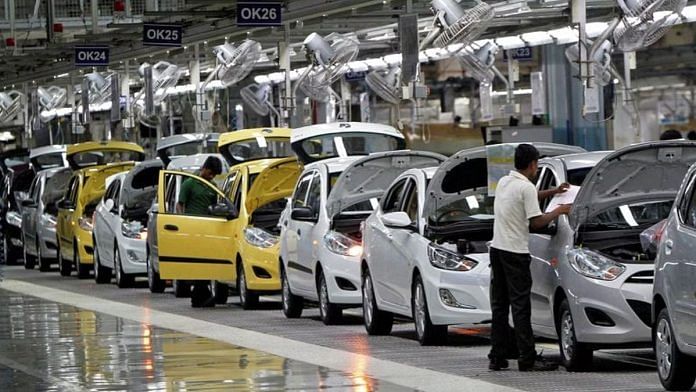On the first of every month, come rain or shine, automotive journalists are bombarded with sales report emails, from big and small players alike. While those tracking the auto sector look at the topline sales numbers for all companies, the real headlines often lie between the lines. One such headline can be made by Maruti Suzuki Cizaz’ sales numbers. What explains the massive uptick in the sales of this sedan in the last few months?
It isn’t difficult to deduce the numbers merely to central and state governments, as well as public sector enterprises that are buying more cars like the Ciaz. It is, after all, a 2020s version of the Ambassador for the average bureaucrat and PSU officials. Such developments indicate that the demand for sedans is slowly growing again in the Indian market, a fact corroborated by the success of the Hyundai Verna that, according to a company spokesperson, crossed almost 4,000 units in sales last month. Hyundai does not give product-wise breakups, however, these numbers were confirmed by a Hyundai India spokesperson.
What sales trends indicate
The sharp drop in sales of entry-level cars, though, is particularly noticeable at Maruti-Suzuki. But for the country’s largest carmaker, the fall in this segment has been made up by a rise in demand in other segments, particularly Utility Vehicles. One is forced to think if these developments signal impending economic trouble.
Sudden spurts in demand are easier to analyse. For example, in May 2023, there was a massive increase in the sale of electric two-wheelers. This happened primarily because of a drastic reduction in the Faster Adoption and Manufacturing of Hybrid and Electric Vehicles (FAME)-II subsidy for such vehicles from 1 June, and the announcement of price hikes worth Rs 15,000-25,000. It is almost certain that sales of electric two-wheelers will be depressed for the next few months. There are also what economists call ‘second-order effects’. For instance, according to a friend who runs a transport business involving large and medium freight vehicles, the construction of new major expressways, coupled with the impact of GST, has significantly reduced freight transport inefficiencies – so much so that sales of vehicles in that segment have not been able to witness the growth anticipated for them.
What is also interesting is the continued weakness of the entry-level motorcycle segment. While a significant increase in revenue allowed manufacturers such as Hero Motocorp to put a positive spin on sales , the fact remains that the overall two-wheeler market has been off its highs since 2015. Two-wheeler and tractor sales are often linked to the health of the rural economy. Is this a sign of stress in the rural economy or negligible wage growth in the labour force, and can this also be linked to weakness in the entry-level passenger car segment?
What is fascinating is that sales for ‘lifestyle’ motorcycles, such as those from Royal Enfield, are robust – so much so that Hero and Bajaj want to wade into that segment as well. And even carmakers are launching more ‘lifestyle’ vehicles like the new Maruti-Suzuki Jimny. Sales of luxury cars are booming with years-long waiting lists. It could be argued that, looking at the Indian automotive sector’s sales, India is undergoing a ‘K-shaped’ recovery after Covid-19.
These are all interesting points for those in the industry, and those in government and economic think-tanks, to ponder over. And while May sales were quite good on the surface, going through these numbers with a fine comb requires understanding all sorts of subsidiary and interlinked issues.
Could there be a climb in automotive sales if the government decided to cut petrol, diesel and natural gas prices, given that global crude and natural gas prices were off the charts in 2022? Yet, what would that do to the aims of carbon emission reduction and vehicle electrification? As it is, reducing the FAME-II subsidy will directly impact electric adoption. High prices at the pump can’t be good, especially if we want to reduce pollution and want the government to build new infrastructure from tax revenues earned at the pump. I wish I had the answers to all the questions I have asked. I don’t, and I doubt anybody does. Sometimes, you just go with your gut and thank God you’re not pulling the trigger on those decisions.
Can an economic thesis be written analysing the socio-economic condition of India from automotive sales? Sure, although academics aren’t my thing. As for me, I’m looking forward to the spate of launches in the coming month. The Honda Elevate, the Hyundai Exter and the facelift of the Kia Seltos, lots of new cars to drive and entertain your folks with. But yes, as automotive journalists, some of us also think about all this stuff.
@kushanmitra is an automotive journalist based in New Delhi. Views are personal.
(Edited by Zoya Bhatti)



